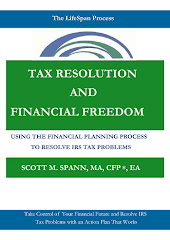If you are self-employed you are responsible for paying the self-employment tax. Any individual who is self-employed, retired, laid-off, or disabled, is responsible for filing and paying Federal estimated quarterly taxes and in states having a state income tax, for filing and paying State estimated quarterly taxes. This can be very different from the taxation that takes place while you are employed.
First of all, the term “estimated quarterly taxes” is not exactly accurate. The IRS publishes a schedule that jumps around a little. The first payment for a tax year is due April 15. The second payment is due June 15, and the third payment is due September 15. The last payment is due January 15 of the next year. So the payment schedule is more like 3½ months, 2 months, 3 months and 4 months in making up the Federal estimated quarterly tax payments. The intent, however, is each payment represents ¼ of what you will owe for the year.
It takes discipline to plan and set aside funds for tax payments throughout the year, especially when the individual or married couple is managing their own income. If sufficient funds are not set aside as income is earned, then the individual or married couple will be put in a situation where some assets might have to be liquidated in order to come up with enough money to pay the taxes. An easier method is for the individual or married couple to know what their approximate Federal and State tax rates are and to apply those rates to income as it is earned. The calculated taxes should be set-aside in a separate interest bearing account until it is time to pay the estimated tax payments.
The IRS allows for two basic methods of calculating estimated taxes. An individual or married couple (if filing jointly) can either elect to pay an amount based on the total taxes paid in the previous year or pay at least 90% of the estimated taxes that will be due in the current year. Remember, in either situation, the amounts paid are only for estimated taxes and the actual tax due will probably differ from the total of estimated taxes actually paid. If electing to pay based on the prior year, the IRS allows you to calculate your amount and to then spread that amount into four equal payments, paying them on the estimated tax due dates.
Example: A married couple filed a joint return and the previous year’s total income was $160,000. The IRS formula is 100% of the prior year income if the income is less than $150,000 or 110% if greater than $150,000. If the couple paid Federal taxes of $42,000 last year on income of $160,000, this year’s estimated taxes would be $42,000 X 1.10 = $46,200. The estimated quarterly tax payments would be $11,550 due on each estimated tax installment date.
If you to pay at least 90% of the estimated tax due during the current year, then you must keep track of income received during the year and make sure the total estimated taxes paid by the time the last installment is paid equals 90% of the actual tax that will be due at filing time. (This should be easy to do, even if the first three installments were insufficient, as the last installment date is January of the next calendar year. This allows you to adjust the last payment for any unexpected income.) Failure to pay at least 90% of the tax due will result in a penalty being assessed on the amounts failing to meet the 90% level. Keep in mind, the 90% option is just that, 90% of the actual tax that will be due by the April 15th filing date. If you just meet the 90% amount, then the remaining 10% due will have to be paid with the final filing.
One surprise people discover when electing the 90% option is that the date of the first payment due in the next year and the annual filing from the last year coincide. Thus, not only is the estimated quarterly payment due for the current year, but any remaining balance owed from the prior year, such as the 10% not paid due to electing the 90% rule, will be due with the year end filing for the prior year. If funds were not set aside coming up with the monies to pay these taxes can be challenging. Keep in mind, these rules apply to both Federal and State taxes if your state has an income tax.
Tuesday, July 21, 2009
The Basics of Estimated Taxes
Labels: tax resolution, financial plan, tax debt
Estimated tax,
tax planning
Subscribe to:
Post Comments (Atom)





No comments:
Post a Comment